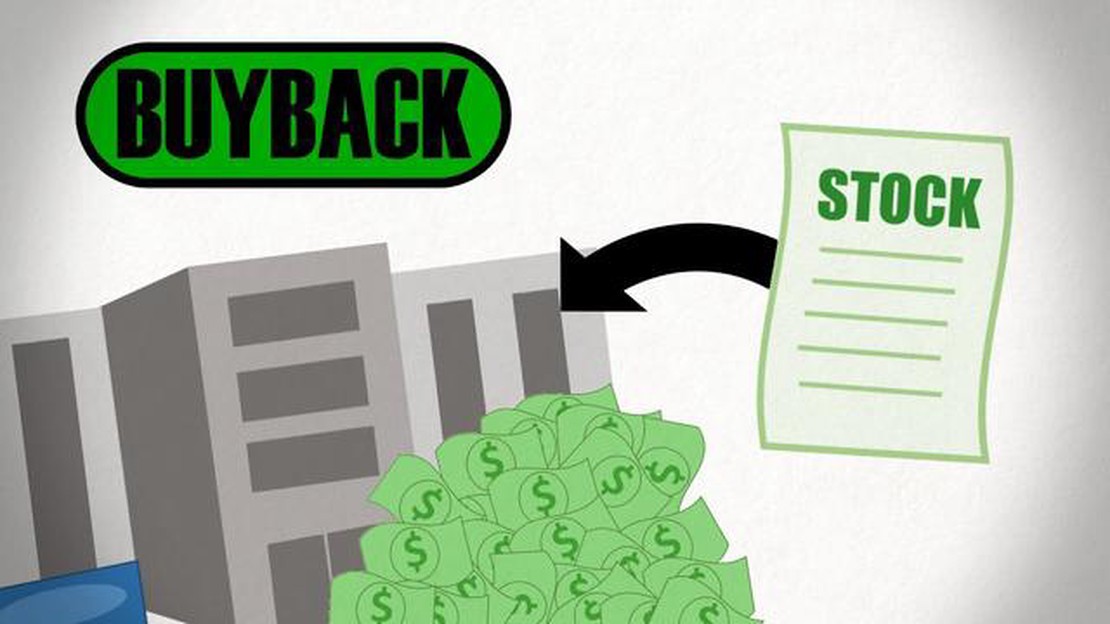How to Update a Running Average: Methods and Examples
How to Update a Running Average Calculating and updating a running average is a common task in various fields, including statistics, computer science, …
Read Article
In the world of finance, the concept of buy back has gained significant popularity in recent years. Buy back, also known as share repurchase, refers to a company’s decision to repurchase its own shares from the market. This strategy has its fair share of proponents and critics, and it’s important to weigh the pros and cons before considering it as an investment option.
One of the main advantages of buy back is that it can indicate that a company has excess cash on hand. Instead of sitting on this surplus, the company can choose to buy back its shares, thereby increasing the value of the remaining shares. This is often seen as a positive signal by investors, as it demonstrates the company’s confidence in its future prospects and its commitment to enhancing shareholder value.
Another benefit of buy back is that it can boost earnings per share (EPS) for the remaining shareholders. With fewer shares outstanding, the company’s earnings are divided among a smaller number of shares, resulting in a higher EPS. This can attract investors who are looking for companies with strong earnings and potential for growth. However, it’s important to note that buy back alone doesn’t guarantee improved financial performance and should be evaluated in conjunction with other financial indicators.
On the other hand, there are potential downsides to buy back that should be taken into consideration. One argument against buy back is that it can be a short-term strategy aimed at inflating the company’s stock price. Some critics argue that companies may use buy back to manipulate their stock prices and create a false sense of growth. Moreover, buy back can also be seen as a missed opportunity for the company to invest in growth initiatives or explore new markets.
In conclusion, buy back can be a good option for companies with excess cash and a desire to enhance shareholder value. It can signal confidence in the company’s future prospects and boost earnings per share. However, it’s important to approach buy back with caution and consider its potential drawbacks, such as the possibility of stock price manipulation and missed investment opportunities. As with any investment decision, thorough research and analysis are necessary to make an informed choice.
Disclaimer: The information provided in this article is for informational purposes only. It should not be considered as financial or investment advice. Please consult with a qualified professional for specific investment recommendations.
Read Also: Comparing the best remittance options to send money to the Philippines
“Buy back can be a good option for companies with excess cash and a desire to enhance shareholder value.”
Buying back your own products or securities can be a strategic move for businesses, but it comes with its own set of advantages and disadvantages. In this guide, we will explore the pros and cons of buy backs to help you make an informed decision.
Now that you have a better understanding of the pros and cons of buy backs, you can weigh them against your business goals and financial situation. Remember, buy backs can be a strategic tool, but they should be approached with careful consideration.
Buy back programs offer several advantages for both consumers and businesses. Here are some of the key benefits:
In conclusion, buy back programs provide various advantages for both consumers and businesses. From a financial return to environmental impact and customer loyalty, implementing a buy back program can have numerous benefits for a company and its customers.
A buyback refers to a corporate action where a company repurchases its own shares from the open market or its shareholders.
Read Also: Top Strategies for Making Big Profits in Forex Markets
There are several advantages of a buyback, including increasing the value of remaining shares, providing an exit option for shareholders, and boosting earnings per share.
Yes, there are some disadvantages to a buyback as well. One potential drawback is that it can signal a lack of investment opportunities or growth prospects for the company. Additionally, it may divert funds away from more productive uses like research and development or acquisitions.
A buyback can benefit shareholders in several ways. By reducing the number of outstanding shares, it increases the ownership percentage and control of the remaining shareholders. It can also lead to an increase in the share price and potentially provide a higher return on investment.
A buyback can be a viable investment strategy for individual investors under certain circumstances. It is important for investors to carefully evaluate the reasons behind the buyback and the financial health of the company. Additionally, it is crucial to assess whether the buyback will truly create value for shareholders in the long run.
How to Update a Running Average Calculating and updating a running average is a common task in various fields, including statistics, computer science, …
Read ArticleIs AC Liberation a full game? Assassin’s Creed Liberation is a stand-alone game that was originally released for the PlayStation Vita handheld console …
Read ArticleBest Forex Analysis Websites for Traders When it comes to forex trading, having access to accurate and up-to-date analysis is crucial. In 2021, with …
Read ArticleUnderstanding the Meaning of Bollinger Bands Crossings Bollinger Bands is a technical analysis tool developed by John Bollinger that provides valuable …
Read ArticleHow to Transfer Money from India to USA through SBI Transferring money internationally can be a complex and daunting process, especially when it …
Read ArticleWhat are the applications of weighted moving average? When it comes to analyzing data, it is essential to use the right tools and techniques to gain …
Read Article